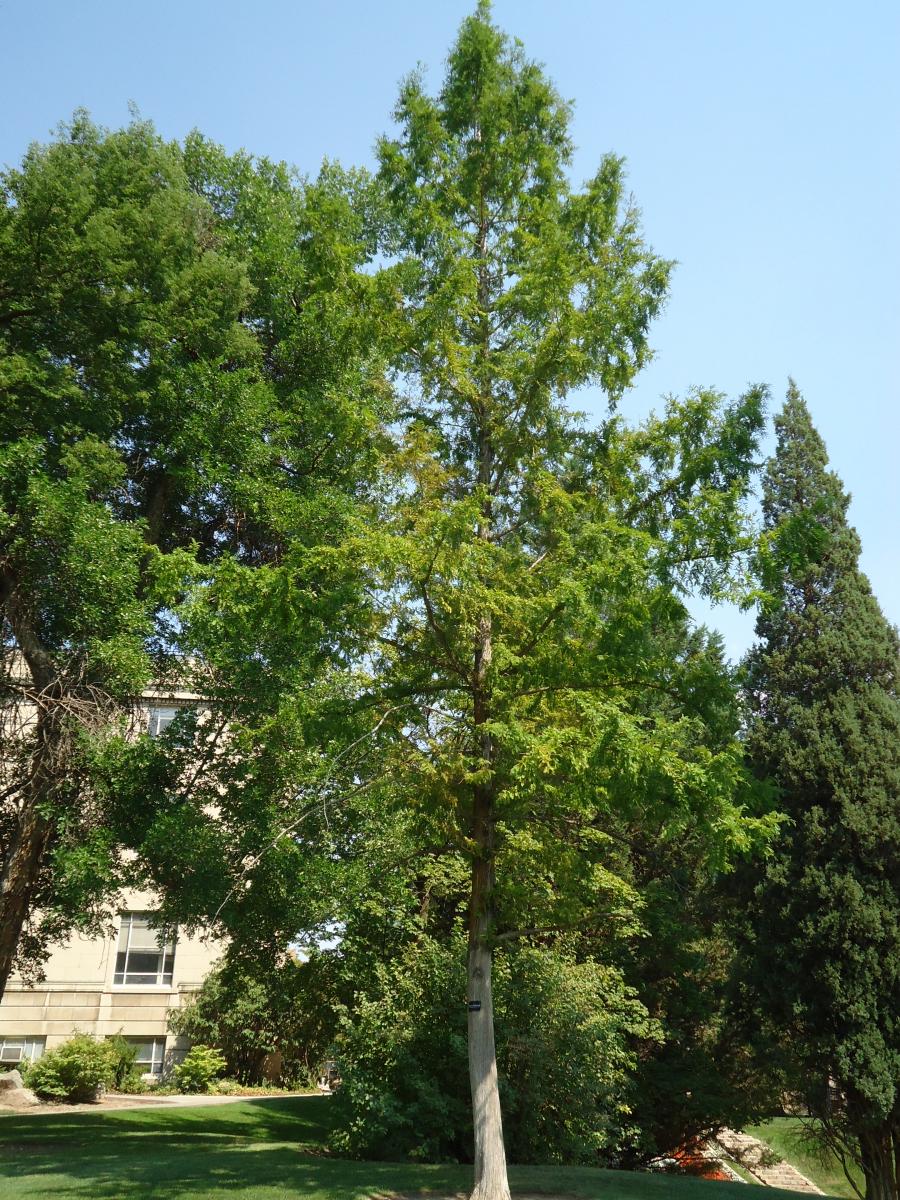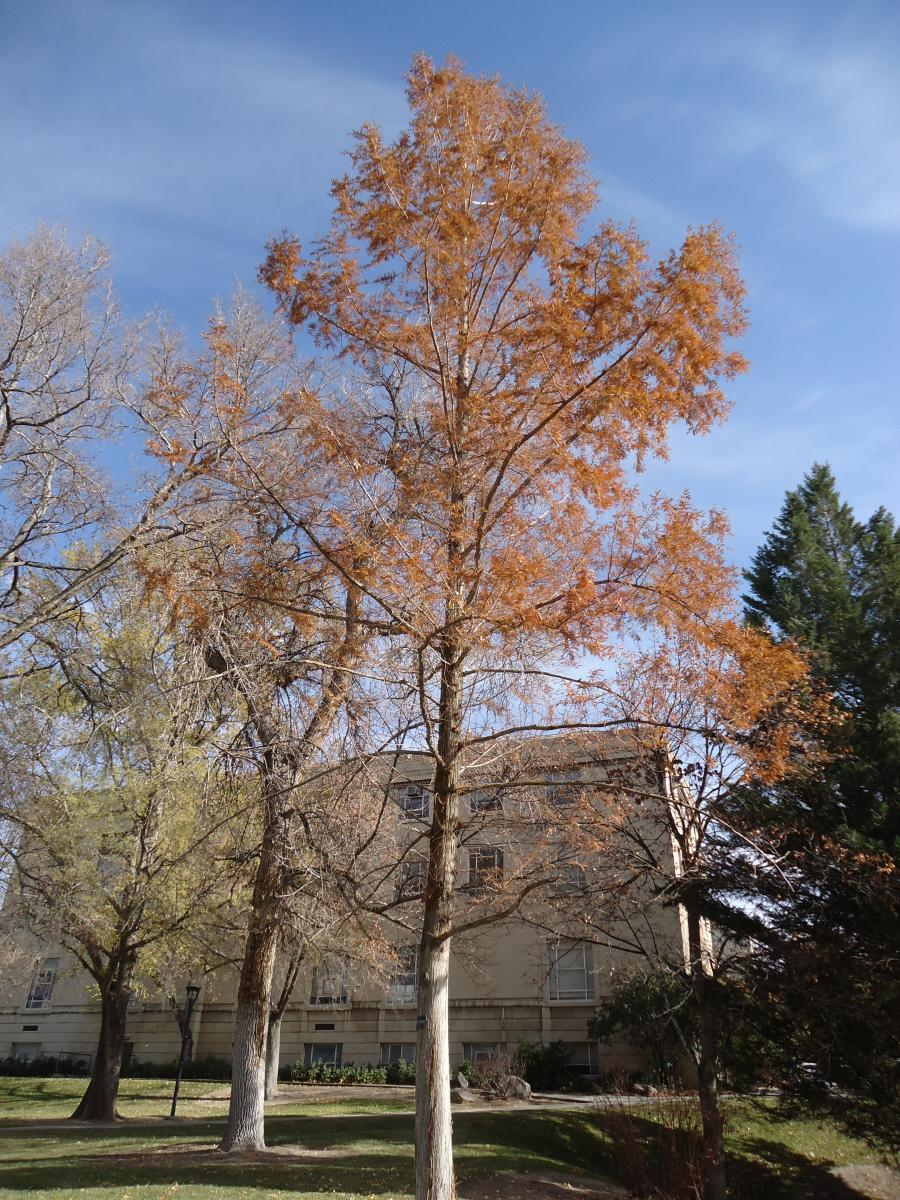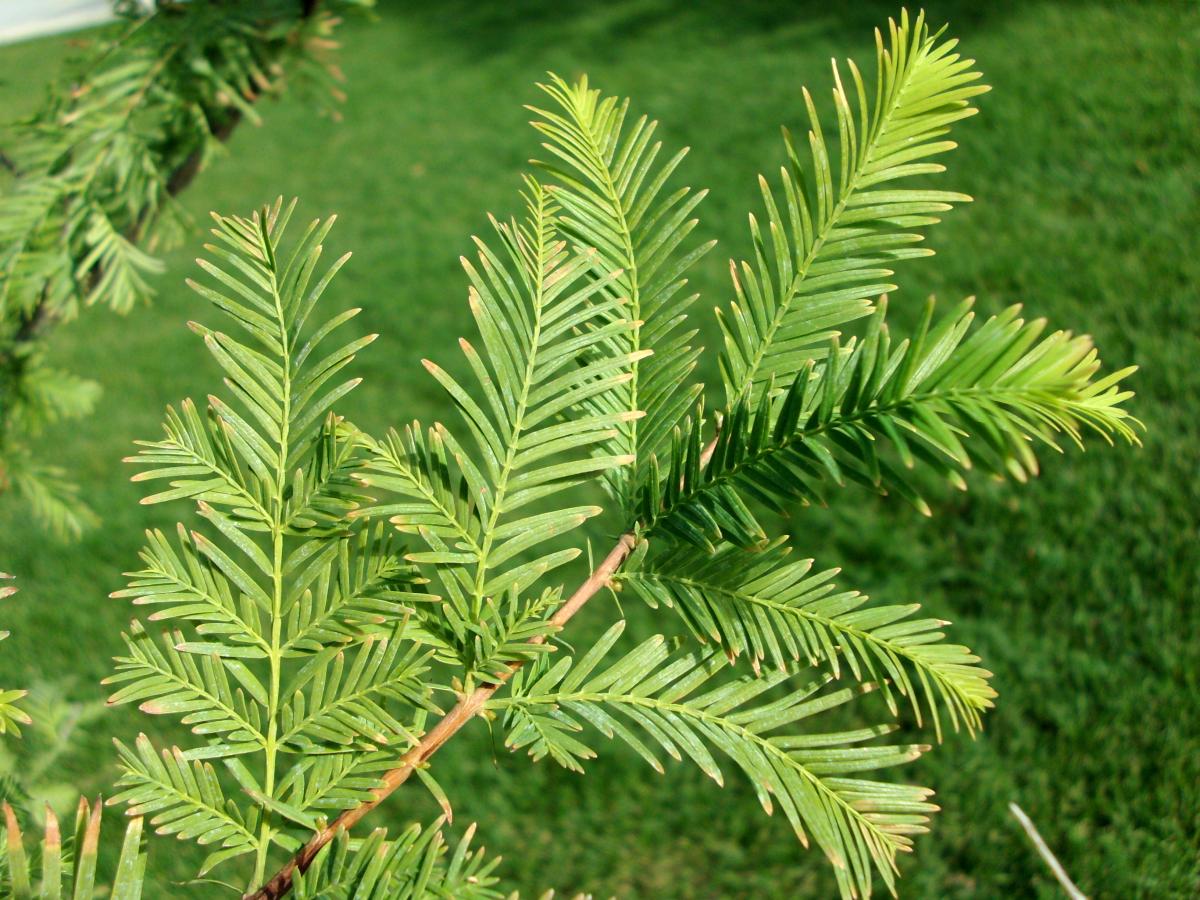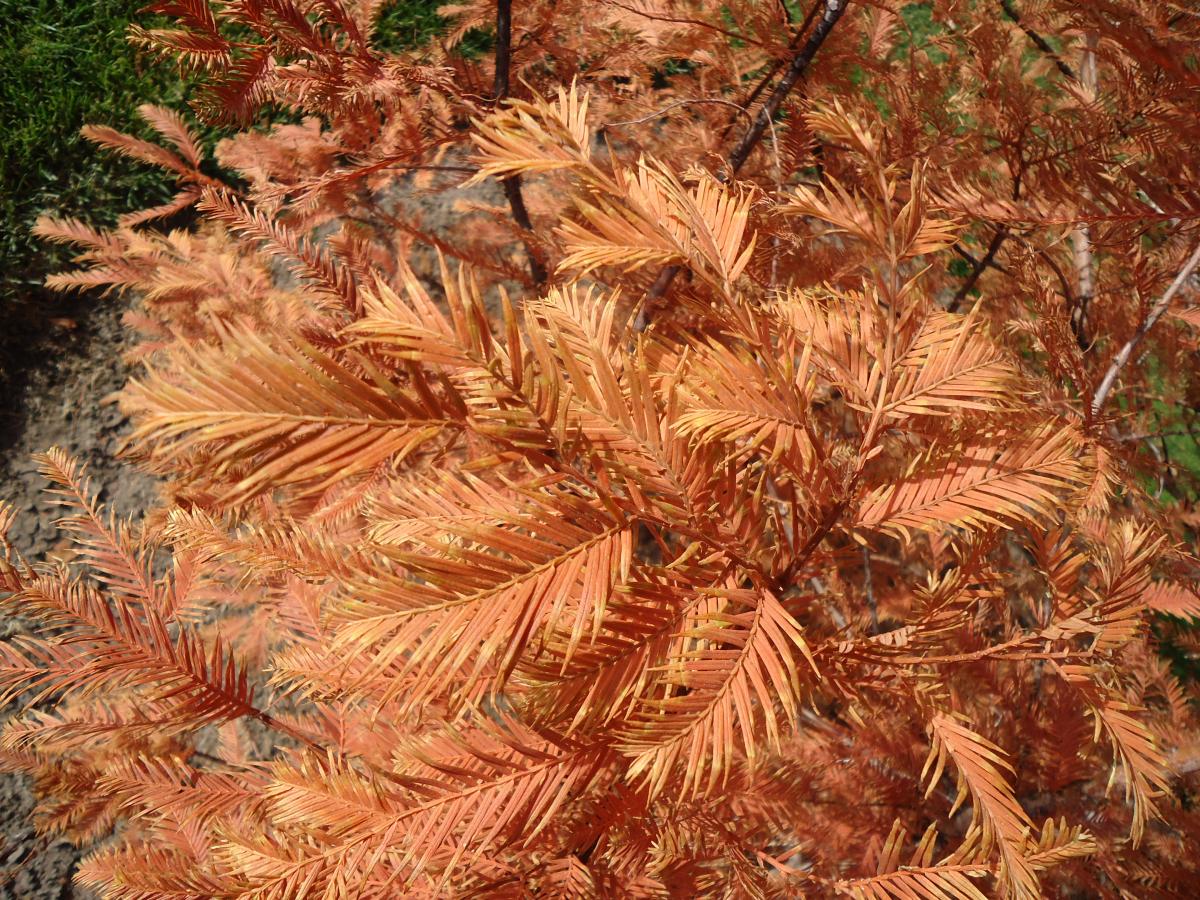Dawn Redwood






Metasequoia glyptostroboides
Leaves: Evergreen-like needles but the tree loses them in the winter so it is a deciduous conifer. Leaves are very narrow (only about 1/16 inch wide), flat, and about ½ inch long. Tips are slightly pointed. Bright medium green color. Fall color is somewhat red-bronze or pink-brown, mostly brown.
Bark/Twigs: Reddish-brown bark when young becoming darker and fissured when older. Bark peels off in long narrow strips.
Flowers/Fruit: Inconspicuous flowers in spring. Fruit is a 1 inch diameter, slightly elongated cone with 20 to 30 triangular scales on a 1 to 1¾ inch long stalk. Cones are sea-green at first and turn dark brown at maturity. Each cone opens up into several, flat-faced segments.
Mature size and shape: Large. 70 feet high x 20 to 25 feet wide. May reach heights over 100 feet tall. Pyramidal or conical shape. Develops into a broad-rounded crown with age.
General information/special features: Plant in full sun. Well-drained, moist soil is best. Prefers a slightly acidic soil.
Landscape use and maintenance: Great specimen tree for large areas. Has a graceful, feathery appearance. Fast growing rate. Low maintenance. Easy to transplant. Seldom requires pruning.
USDA Hardiness Zone: 5 to 8
Family/Origin: Taxodiaceae – Redwood. Native to China. From fossil records, the dawn redwood is known to have existed as many as 50,000,000 years ago, including in the northern parts of the US. However, it was not until 1941 that it was first discovered growing in the wild near the town of Modaoqi, China. The tree's natural range is an area of only about 232 square miles.
Campus Use: Uncommon. Can be found in the lawn area west of George Thomas (Bld 5) or in the grass area south of Sculpture (Bld 39).
